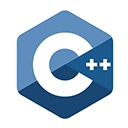Polymorphism is one of the key concepts in object-oriented programming (OOP). It allows you to perform different actions or exhibit different behaviors based on the object that you are working with. In C++, polymorphism is achieved through features like virtual functions and inheritance. In this guide, we'll explore the basics of C++ polymorphism.
Polymorphism through Inheritance
In C++, polymorphism is often achieved through inheritance and the use of virtual functions. Here's how it works:
A base class defines a virtual function.
class Shape {
public:
virtual void draw() {
// Implementation in the base class
}
};
Derived classes can override the virtual function with their own implementations.
class Circle : public Shape {
public:
void draw() override {
// Implementation in the Circle class
}
};
class Rectangle : public Shape {
public:
void draw() override {
// Implementation in the Rectangle class
}
};
Polymorphism allows you to treat objects of derived classes as objects of the base class.
Shape* myShape = new Circle;
myShape->draw(); // Calls the draw method of the Circle class
Static and Dynamic Binding
In C++, there are two types of binding when calling functions:
- Static Binding: The function to be called is determined at compile time based on the reference or pointer type.
- Dynamic Binding: The function to be called is determined at runtime based on the actual object's type.
Polymorphism in C++ primarily involves dynamic binding, which allows you to call the correct function based on the object's type.
Conclusion
C++ polymorphism is a powerful feature that enables you to write flexible and extensible code. It simplifies code by allowing you to work with objects at a higher level of abstraction and reuse code through inheritance and virtual functions. As you continue your C++ journey, you'll explore more advanced topics like abstract classes and interfaces.

